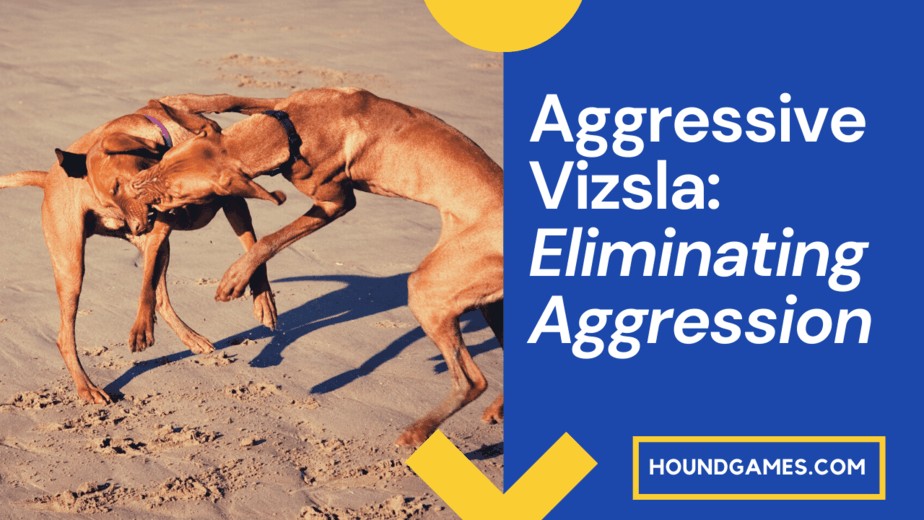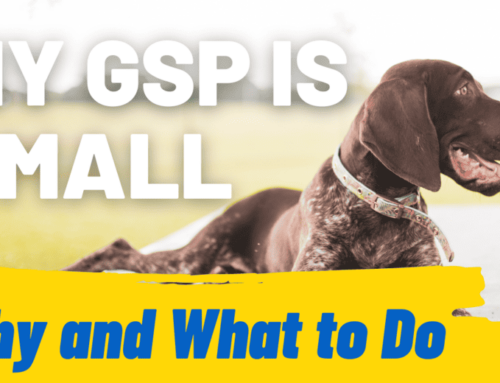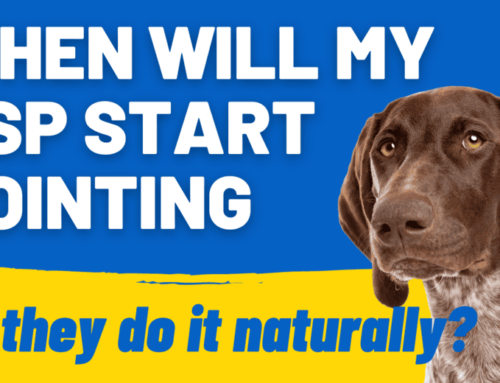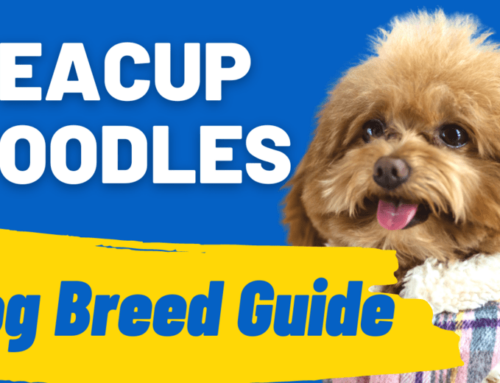The Hungarian Vizsla is noble, lively, hyper-attached, and a devoted companion. That is until they aren’t. Although aggression isn’t typically a characteristic of a well-bred Hungarian Vizsla, certain bloodlines and some mistakes owners unknowingly make can result in an aggressive dog.
Sometimes what is thought of as Vizsla aggression is simply puppy biting or growling. Still, it can escalate into food aggression, aggression against other dogs, small animals, or even aggression against people.
Regardless of the target, watching your Vizsla develop serious behavioral problems is often heartbreaking for the owner and can put enormous pressure on the household. So how do you fix aggression in your Vizsla?
Why is my Vizsla aggressive? How to understand aggression in Vizslas
To understand aggression in Vizslas, it is vital to understand the breed. Vizslas are sensitive but serious hunting dogs.
That instinct runs deeper than their need to be a simple companion and can easily cause reactive behavior.
They are also high-energy dogs, meaning they need about two hours of vigorous activity a day. Some Vizsla bloodlines have also inadvertently been bred to be high-strung and nervous, often creating dogs that are reactive or fear aggressive (reactive).
This means the following are all possible reasons for aggression in your Vizsla:
- Genetics
- Poor or inadequate socialization (You might like to read: Too Late to Socialize Puppy? (Age Expectations))
- Pain or an underlying health problem
- Improper training and discipline
- A high prey drive
- And a lack of exercise and stimulation
These are not the only possible culprits of Vizsla aggression, but we would be here all day if we discussed all of them. The important thing is to understand that an aggressive dog is one in extreme distress, reacting to a perceived threat.
To begin to address issues of aggression in your Vizsla, we need to identify which kind of aggression your Vizsla is showing. Remember, they can display more than one.
- A few Vizslas, primarily adult intact males, may display dominant aggression. This usually happens when they are already an adult with the complete set of sex hormones. They usually take this out on other dogs in the household.
- Food aggression usually starts at a young age and occurs when the puppy begins to growl, snarl and nip, at anyone coming near his food bowl or chew toy. Sometimes this possessiveness can extend to the owner.
- Dog aggression happens when the Vizsla begins to show aggression to other dogs, usually new or strange ones.
- Predator instinct happens when your Vizsla decides to chase smaller animals or moving objects like bicycles.
- Barrier aggression happens when your dog is barred from reaching its targets, such as another dog by a wall or tight leash, causing leash reactivity. Often, but not always, this aggression goes away when the barrier is removed.
If your Vizsla is suffering from one or more of these problems, there’s no point in dwelling too much on reasons. We must move on to discussing solutions.
If you’d like a comprehensive guide to fear-based or anxiety-based aggression, be sure to read our post on this subject here.
And if your dog has ever biten for what seemed like no reason, be sure to read our post Dog Bites Without Warning.
How to resolve Vizsla aggression: Do’s and Don’ts
Do: Up the amount of controlled exercise and stimulation your Vizsla is getting
Most Vizslas become aggressive out of anxiety.
One of the critical reasons for this is that as high-energy but sensitive dogs, their energy turns into anxiety if they do not get enough of an outlet.
This, in turn, becomes reactivity or fear-based aggression.
The first step to addressing this problem is by tiring your Vizsla in a safe environment where they are not exposed to their triggers, such as other dogs or strange people.
Exercise will release the pent-up energy that is causing their anxiety and make them receptive to counter-conditioning and giving them alternative ways to behave when they encounter their trigger.
Don’t: Use unstructured exercise
Uncontrolled playtime like chasing a ball or playing tug can only make your Vizsla more excited and aroused. Thus, more reactive.
Choose games and workouts that require your Vizsla to learn boundaries and impulse control, such as running quietly beside you or a bicycle in a quiet area with few distractions.
Do: Begin investing heavily in thorough obedience training.
Note that obedience training on its own will not fix aggression.
But it does start challenging your dog mentally, create boundaries, and will eventually counter-condition your dog. This teaches them an alternative set of behaviors to engage in when they encounter their trigger.
At the very least, your Vizsla needs to become 100% reliable on the following commands:
- Sit/stay/down immediately after given the command
- Place and crate training (the play dead command is also helpful)
- The “leave it” command
- Learn how to settle and calm down when told to
- Learn to remain focused on the owner during any interaction. Thus, owner-focused drills are essential
- Learn how to give the owner space and never crowd the owner, such as when opening the door for a visitor
Don’t: Resort to punishing your Vizsla for bad behavior
This could be through shouting, punitive corrections, or through the use of e-collars and prong collars.
This is not just because a Vizsla is “handler soft” and will react negatively to punishment, but because, more often than not, these tools will be counter-productive.
Suppose a dog is punished or given a shock at the wrong time. In that case, it will increase their negative emotional response and spike their adrenaline, usually causing the bad behavior to escalate.
They will also likely connect the unpleasant stimulus to the trigger and not their own behavior. This will only increase their fear or aggression.
Do: Start training your Vizsla in an environment without any triggers
If your Vizsla becomes aroused by other dogs or strangers, don’t allow your dog to see them while you have started training.
Keep your initial training environment completely free of anything that might overwhelm your Vizsla and cause an adverse reaction.
For example, block off any view of the street where your dog can see strangers or other dogs walk by.
Don’t: Accidentally teach your dog that aggression is the correct reaction
Many well-meaning owners will try to “soothe” their dogs when they become reactive or aggressive.
They will stroke it and talk softly to calm their dog down.
To your dog, this is only reinforcing their idea that their behavior is correct. Instead, if you do run into trouble, make sure you have a sharp exit plan.
This means removing yourself and your Vizsla from the situation quickly without saying a word.
Carry a spray bottle of citronella water or a pop-open umbrella to frighten an approaching loose dog away and calmly ask any person nearby to stay clear.
Do: Reduce your own anxiety by making sure your Vizsla is under complete control
Your own calmness is as crucial as your dogs. If you are anxious and on edge about your Vizsla’s aggression, this will only make a feedback loop between you and your dog.
Invest time in making your Vizsla comfortable wearing a muzzle on walks. The muzzle should be breathable and allow your dog to eat treats for good behavior. Also, make sure your dog is secured on a four-to-six-foot leash at all times.
Knowing you have control over your Vizsla will reduce your own angst over a possible incident and help keep your dog calmer too.
Do: Have your Vizsla tested for underlying medical issues which may be contributing to aggression
Hypothyroidism has been known to cause aggression in dogs.
Similarly, a lack of certain hormones and neurotransmitters have also been associated with aggression, such as 5-HTP.
Do: Examine your Vizsla’s dietary requirements
Studies have shown that adding tryptophan and lowering the protein content in a dog’s diet may help with aggression issues. But always consult your vet before changing your Vizsla’s diet.
What to do when my Vizsla is aggressive to other dogs
Suppose your VIzsla is aggressive toward other dogs. In that case, the best place to start is with the obedience and counter-conditioning methods described above.
At first, do not allow your Vizsla to meet other dogs at all.
This is because your dog may have already learned a fight or flight response when it sees other canines. Therefore, it needs to first know emotional and impulse control, reliable obedience, and focus on the owner before it encounters the trigger—another dog.
Once your Vizsla has learned these techniques, you can begin adding more distractions to their training regime. Eventually, one of the distractions should be a well-mannered and controlled dog, preferably with an experienced trainer.
To start with, keep the new dog at a safe distance while you ask for basic training like sit/stays and keep your Vizsla focused on you. Keep the muzzle on and make sure your dog is secured to sturdy lead.
If your Vizsla overreacts to the perceived threat when it is far away, then you have asked too much too soon and go back to basic obedience, relaxation, and focus training.
If your Vizsla accepts another dog sitting quietly in the distance, slowly allow the new dogs to come closer so long as your Vizsla remains focused on you.
Very gradually, over a long period, bring the new dog closer while you keep your dog distracted with positive-reinforcement activity or a favorite toy.
Eventually, your dog should become desensitized to having other dogs around while it’s working. Once you have conditioned in the new behaviors, you can gradually increase exposure to new dogs, making sure to keep every new experience positive and calm.
When my Vizsla is aggressive to other people
Like dog aggression, your Vizsla should only start being introduced to new people when taught the basics, such as focusing on you at all times, controlling its emotions, and obedience commands.
To begin with, keep your dog entirely away from strangers.
If visitors come to the door, make sure your Vizsla is secured in a part of the house where it cannot see the people. When traveling, keep them crated and keep the crate covered, so the flight/fight response is not triggered.
As your Vizsla becomes more reliable in their training begin to slowly introduce triggers as distractions. For instance, start with the doorbell ringing while your dog is on a dragline.
If the doorbell causes your Vizsla to charge the door, use the line to regain control and guide them back to where you want them to be.
Then ask for alternative controlled behavior, such as calmly going to the crate when the doorbell rings instead.
Reward every time your Vizsla gives the correct behavior, even if they need coaxing. Repetition and patience are key.
Eventually, they should learn that the doorbell means it’s time to “settle” or go to the crate with a fun toy to keep them busy and relaxed.
Only begin doorbell desensitization after your dog has had enough exercise to feel calm and relaxed.
Once the doorbell or knocking no longer triggers an overreaction, you can begin introducing other distractions, such as having a stranger in the distance while you build a range of alternative behaviors.
Start with somebody stand far away, then coming closer, then passing you. At the same time, you should be asking your Vizsla to stay close, focus on you, and engage in their training.
All of this should be done gradually, in short doses. Never ask too much at once, as this can overwhelm your Vizsla’s threat response and set their training back quite a bit.
Also, resign yourself that your Vizsla might never be fully relaxed around strangers.
They may always need to be secured when visitors come round. And you may need to always intervene anytime a well-meaning stranger wants to walk up and pat your dog without asking.
What to do when your Vizsla puppy is aggressive, biting, or growling
Vizsla puppies are well-known for their attacks of the sharkies. Although this can be frustrating, it’s usually only playful. Similarly, they can take a long time to calm down, often only maturing between two and three years old.
But suppose your Vizsla puppy is showing signs of real aggression. In that case, it is essential to follow the plan outlined above, with thorough socialization.
It is not enough just to expose your Vizsla puppy to as many new places, sounds, dogs, and people as possible, but to make each experience a positive one from a young age.
Good manners should also be part of the process. Your Vizsla needs a consistent routine, regular exercise, and clear boundaries about what constitutes good behavior.
This means never allowing them to jump up, teaching bite inhibition, and all the other training described above. Our article on Vizsla puppy biting also explains how to deal with food aggression from a young age.
If you find your Vizsla puppy is just a handful and is out-of-control, be sure to read our post on calming down your Vizsla puppy.
Final Word
Vizslas are hyper-sensitive dogs with an extremely high prey and work drive. So dealing with Vizsla aggression is trickier than with many, more forgiving breeds.
It takes commitment, routine, and devoted training to teach your Vizsla appropriate behaviors. The important thing is never to give up or be afraid to bring a certified behaviorist or trainer to help you deal with the situation.




